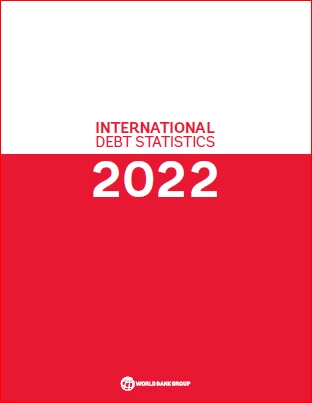
Every year the IDS publication continues to improve data quality and coverage to promote the comprehensive disclosure of public and publicly guaranteed debt of low- and middle-income countries. For the first time, IDS 2020 disseminated new data on the borrower composition of external debt obligations, with information on sectoral borrowing disaggregated by government, public corporations, and government guarantees.
Also for the first time, last year’s publication, IDS 2021 included an expanded dataset with detailed information on lending by creditor countries and multilateral institutions to low- and middle-income countries in addition to the disaggregation of countries’ external debt by creditor type, a long-standing element of the external debt data disseminated by the World Bank.
This year, the International Debt Statistics 2022 database further enhances debt transparency by introducing two new datasets.
- The 2020 dataset has been expanded to provide detailed information on average lending terms by creditor country (commitment amount, maturity, grace period, interest rate, and grant element) and the currency composition of debt stock. The Central Bank is also featured separately in the borrower composition along with its’ debt instruments.
- The World Bank continues to take the lead in disseminating data on DSSI outcomes. Last year, a DSSI supplement to the IDS database was created and provided disaggregation by select multilateral and bilateral creditors of projected debt service payments for 2020 -2022 on an annual and monthly basis. This year, the database now includes the actual debt service deferred in 2020 by each bilateral creditor and the projected monthly debt-service payments owed to all bilateral creditors for year 2021.
According to the IDS 2022, as the once-in-a-generation crisis hit the world economy in 2020, the development in debt stocks and financial flows to low- and middle-income countries was a story of highs and lows. Many low- and middle-income countries entered 2020 in a vulnerable position, with public external debt already at elevated levels. Fiscal support to mitigate the impacts of COVID-19 pushed debt levels in some countries to record highs. Rapid intervention and extraordinary support from multilateral institutions, led by the World Bank and the International Monetary Fund (IMF), raised net inflows from multilateral creditors to $117 billion, the highest level in a decade.
Total external debt stock of low- and middle-income countries rose, on average 5.3 percent in 2020. The rise in external indebtedness was not matched by gross national income (GNI) and exports growth. Low- and middle-income countries external debt-to-GNI ratio rose to 29 percent in 2020 from 27 percent in 2019, and the debt-to-export ratio increased to 123 percent from 106 percent in 2019. This worsening of debt indicators was widespread across all geographic regions.
Here are some key messages further elaborated in the report:
- The combined external debt stocks of low- and middle-income countries rose to $8.7 trillion at end-2020, driven by an increase in long-term debt. Long-term public and publicly guaranteed external debt rose 10 percent in 2020 to $3.7 trillion. Long-term private non-guaranteed debt rose 3 percent to $2.8 trillion. Short-term debt was unchanged at $2.2 trillion.
- The external debt stock of DSSI-eligible countries rose 12 percent in 2020 to $860 billion. Debt owed to multilateral creditors, including the IMF, rose 22 percent to $295 billion ($243 billion in 2019), equivalent to 48 percent of public and publicly guaranteed debt stock at end-2020.
- Net debt inflows to low- and middle-income countries rose 9 percent in 2020 to $435 billion. These debt inflows to public sector of DSSI-eligible countries rose 25 percent in 2020 to $71 billion, the highest level of the decade. Net inflows from multilateral creditors, including the IMF, were $42 billion, and net inflows from bilateral creditors were $10 billion.
- New bond issuance by the 123 low- and middle-income countries reporting to the DRS reached an all-time high of $457 billion in 2020, 14 percent higher than 2019 ($400 million). China accounted for close to half (48 percent) of bonds issued in 2020.
- External debt ratios have further deteriorated by the global pandemic when the pace of external debt accumulation outstripped growth in most low- and middle-income countries. Many also experienced a sharp fall in export earnings.
A new debt statistics website was launched to provide a user-friendly one-stop shop, with enhanced data query capabilities and access to the IDS database and other debt statistics.
To access the IDS report and related products:
- Download the full publication (PDF), also accessible from the Open Knowledge Repository (OKR)
- Download or query the database
- Visit the IDS 2022 Products Page
- Access the statistical tables
- View the about the data section for a full description of the concepts and definitions in IDS
- Check the FAQs
- Visit the Data Helpdesk for additional questions about World Bank data and lets users submit new World Bank data


Join the Conversation